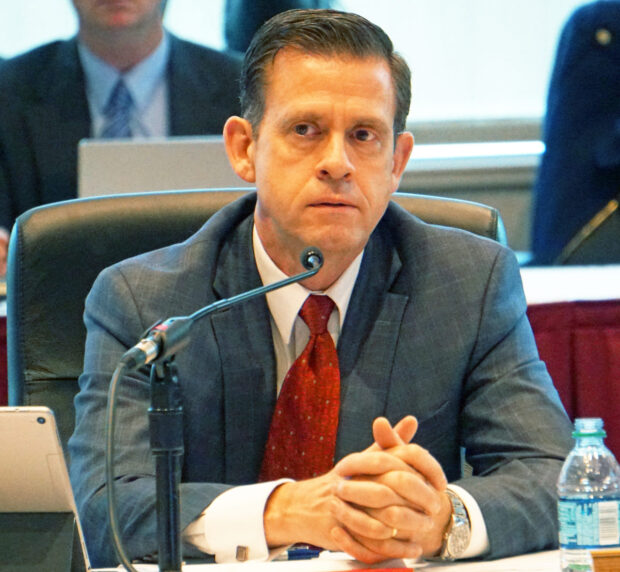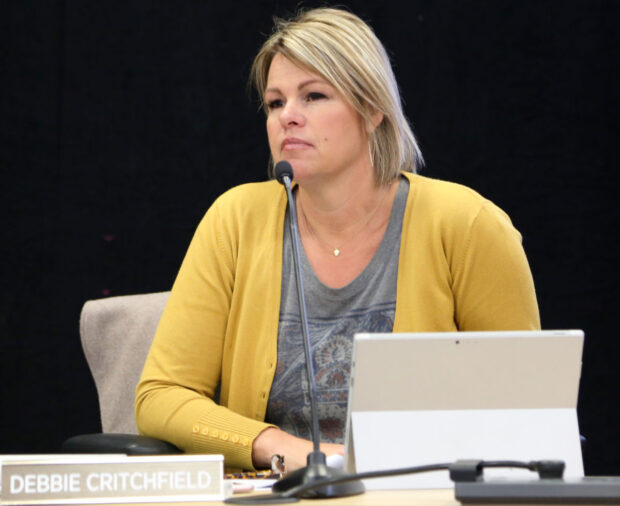Unless a school can do it in groups of fewer than 10, Idahoans should generally not expect their local public school or charter to reopen this academic year.
The State Board of Education voted unanimously to modify the school reopening criteria Monday to align with Gov. Brad Little’s Idaho Rebounds plan for a staged reopening in response to the coronavirus pandemic.
The revisions mean Little and the State Board are providing consistent guidance when it comes to coronavirus response. But they could represent a roadblock for any medium-sized or large districts that are considering reopening this spring.
Little lifted a stay-home order and outlined a staged recovery Thursday, but public education likely won’t return to normal any time soon. The current first stage of Idaho Rebounds says gatherings, public and private, should be avoided. The second stage — tentatively scheduled to run May 16 to 29, if there is no significant spike in COVID-19 cases — allows for gatherings of fewer than 10 “where appropriate physical distancing and precautionary measures are observed.”
State Board President Debbie Critchfield and member Andrew Scoggin deferred to Little’s guidance on gatherings several times Monday.

“If I’m understanding this, what we’re saying is there will be no reopening of school this year based on our reentry criteria,” said Scoggin, pointing out the limit would basically allow one teacher and nine students in a standard classroom setting.
“Correct,” said Critchfield, adding that exceptions could be approved on a case-by-case basis.
Those exceptions would be considered for small groups. Schools would still be required to meet physical distancing requirements for proctoring exams or working one-on-one with special education students.
In that regard, State Board members aren’t planning for a return to normal classroom operations. Instead, they anticipate schools slowly working with very small groups, in phased settings, for short periods of time.
“If someone could keep the physical distancing requirements that are stated in the phasing in their small groups they could have pockets of things that happen,” Critchfield said.
Here is the meat of the language the State Board approved Monday (the full language, including exceptions and more specifics, is available online, scroll to Tab 2, Attachment 1).
Minimum reentry criteria:
- No statewide stay-home orders are in place, and schools have a physical distancing plan in place that the local health district has approved.
- The statewide reopening criteria have been met as defined at rebound.idaho.gov. School districts and charter schools located in communities that have experienced no community spread may consider returning to in-person instruction within the physical distancing guidelines and approval by the local public health district.
- Approval by the local public health district, after review of school district and charter school cleaning, disinfection and physical distancing protocols.
Additionally, the State Board approved a new requirement that any school planning to reopen must have a plan in place for immediate closures should a student or faculty be diagnosed with COVID-19.

The State Board has been looking at tweaking the criteria for the past 10 days in an attempt to align its guidelines with Little’s updated plans, Critchfield said.
“I certainly don’t want to have the appearance, as we’ve heard of school districts that are opening or considering opening, that this was an attempt to make it more strict or to usurp the local control,” Critchfield said.
While the revised criteria set a high bar for reopening this year, the State Board continued to plan for the possibility of further disruptions and closures during the 2020-21 school year. The State Board again discussed blended learning models and using stimulus funds to buy a statewide learning management system that could run online learning programs and send lessons and assignments to students.
“The reality of the world we live in, until we have a vaccine, is that we may very well be faced with rolling shutdowns,” board member Linda Clark said. “We’re not going to just start school in the fall and everything is going to go along well.”
“If we all agree that this COVID situation is going to forever change education and move it to more of a blended model, I think we have to be willing to make some strategic investment and move the system in that direction,” board member Kurt Liebich said.
Lawsuit update
For the first time since schools chief Sherri Ybarra sued fellow State Board members April 24, the board addressed the matter publicly.
The State Board, which met in closed executive session Thursday while Ybarra recused herself, will be represented by the Idaho attorney general’s office in the suit.
Ybarra will be represented by appointed Special Deputy Attorney General David Leroy.
Critchfield issued the following statement on the suit: “The board has discussed its options for legal representation in defense against the petition filed by the state superintendent against the board. The board is currently represented in all matters by the Office of the Attorney General, and we are confident that the Office of the Attorney General will ably defend the board in this matter too. Given the state’s current budget crisis, we also believe this is the most fiscally prudent approach for board legal counsel.”
The dispute dates back to the 2020 legislative session, when lawmakers stripped Ybarra’s State Department of Education office of 18 full-time positions and $2.7 million in funding. The Legislature is sending the money and personnel to the State Board, with the transfer set to take place July 1.
The Idaho Supreme Court will hear oral arguments on the case June 5.
